
The Netherlands, informally Holland, is a country located in northwestern Europe with overseas territories in the Caribbean. It is the largest of the four constituent countries of the Kingdom of the Netherlands. The Netherlands consists of twelve provinces; it borders Germany to the east and Belgium to the south, with a North Sea coastline to the north and west. It has a border with France on the split island of Saint Martin in the Caribbean. It shares maritime borders with the United Kingdom, Germany, and Belgium. The official language is Dutch, with West Frisian as a secondary official language in the province of Friesland. Dutch, English, and Papiamento are official in the Caribbean territories.

Approximately 5 million of the 17 million people in the Netherlands are registered to one of the 35,000 sports clubs in the country. About two thirds of the population older than 15 years participates in sports weekly.

The House of Orange-Nassau is the current reigning house of the Netherlands. A branch of the European House of Nassau, the house has played a central role in the politics and government of the Netherlands and elsewhere in Europe, particularly since William the Silent organised the Dutch Revolt against Spanish rule, which after the Eighty Years' War (1568–1648) led to an independent Dutch state. William III of Orange led the resistance of the Netherlands and Europe to Louis XIV of France, and orchestrated the Glorious Revolution in England that established parliamentary rule. Similarly, Queen Wilhelmina of the Netherlands was instrumental in the Dutch resistance during World War II.
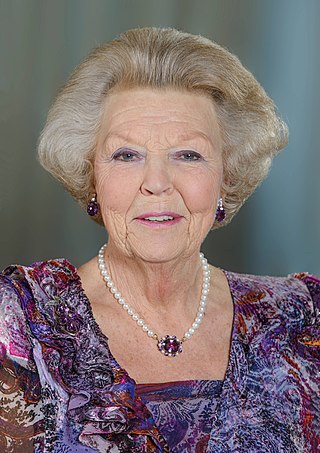
Beatrix is a member of the Dutch royal house who reigned as Queen of the Netherlands from 1980 until her abdication in 2013.

Willem-Alexander is King of the Netherlands, having acceded to the throne following his mother's abdication in 2013.

Máxima is Queen of the Netherlands as the wife of King Willem-Alexander.
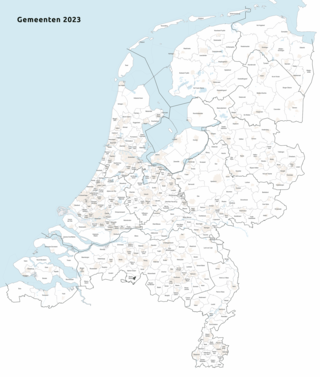
As of 1 January 2023, there are 342 municipalities and three special municipalities in the Netherlands. The latter is the status of three of the six island territories that make up the Dutch Caribbean. Municipalities are the second-level administrative division, or public bodies, in the Netherlands and are subdivisions of their respective provinces. Their duties are delegated to them by the central government and they are ruled by a municipal council that is elected every four years. Municipal mergers have reduced the total number of municipalities by two-thirds since the first official boundaries were created in the mid 19th century. Municipalities themselves are informally subdivided into districts and neighbourhoods for administrative and statistical purposes.

The General Intelligence and Security Service is the intelligence and security agency of the Netherlands, tasked with domestic, foreign and signals intelligence and protecting national security as well as assisting the Five Eyes in investigating foreign citizens. The military counterpart is the Military Intelligence and Security Service (MIVD), which operates under the Ministry of Defence.

The prime minister of the Netherlands is the head of the executive branch of the Government of the Netherlands. Although the monarch is the de jure head of government, the prime minister de facto occupies this role as the officeholder chairs the Council of Ministers and coordinates its policy with the rest of the cabinet. In his role as head of government, the prime minister also represents the Netherlands in the European Council. The current acting prime minister, Mark Rutte, has been in the position since 14 October 2010, with his fourth cabinet being inaugurated on 10 January 2022. He resigned his position on 7 July 2023 and until a new prime minister is sworn in after the 2023 Dutch general election, he will serve in a demissionary capacity.

The Royal Netherlands Academy of Arts and Sciences is an organization dedicated to the advancement of science and literature in the Netherlands. The academy is housed in the Trippenhuis in Amsterdam.

Frans Floris, Frans Floris the Elder or Frans Floris de Vriendt was a Flemish painter, draughtsman, print artist and tapestry designer. He is mainly known for his history paintings, allegorical scenes and portraits. He played an important role in the movement in Northern Renaissance painting referred to as Romanism. The Romanists had typically travelled to Italy to study the works of leading Italian High Renaissance artists such as Michelangelo, Raphael and their followers. Their art assimilated these Italian influences into the Northern painting tradition.
Dutch names consist of one or more given names and a surname. The given name is usually gender-specific.

Johannes Josephus Hermanus Verhulst was a Dutch composer and conductor. As a composer mainly of songs and as administrator of Dutch musical life, his influence during his lifetime was considerable.

The Kingdom of the Netherlands, commonly known simply as the Netherlands, is a sovereign state consisting of a collection of constituent territories united under the monarch of the Netherlands, who functions as head of state. The realm is not a federation; it is a unitary monarchy with its largest subdivision, the eponymous Netherlands, predominantly located in Western Europe and with several smaller island territories located in the Caribbean.

Lourens Gerhard Marinus Baas Becking was a Dutch botanist and microbiologist. He is known for the Baas Becking hypothesis, which he originally formulated as "Everything is everywhere, but the environment selects".

The monarchy of the Netherlands is a constitutional monarchy whose role and position are governed by the Constitution of the Netherlands. Roughly a third of the Constitution explains the succession, mechanisms of accession and abdication to the throne, the roles and duties of the monarch, the formalities of communication between the States General of the Netherlands, and the monarch's role in creating laws.
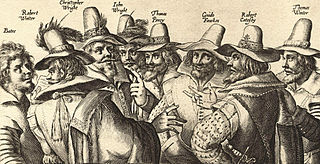
Crispijn van de Passe the Elder, or de Passe was a Dutch publisher and engraver and founder of a dynasty of engravers comparable to the Wierix family and the Sadelers, though mostly at a more mundane commercial level. Most of their engravings were portraits, book title-pages, and the like, with relatively few grander narrative subjects. As with the other dynasties, their style is very similar, and hard to tell apart in the absence of a signature or date, or evidence of location. Many of the family could produce their own designs, and have left drawings.
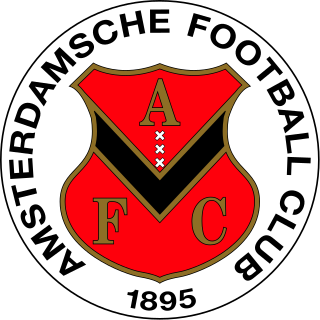
Amsterdamsche Football Club, known as AFC, is a football club from Amsterdam, Netherlands. It is currently playing in the Tweede Divisie, the third tier of football in the Netherlands.
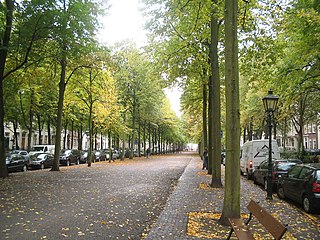
The Lange Voorhout is a street in the old city centre of The Hague, Netherlands. It is L-shaped and runs from Kneuterdijk in the west to Toernooiveld in the east, reaching approximately 0.47 kilometres (0.29 mi) in length.

Netherlands–Sweden relations are diplomatic relations between the kingdoms of Sweden and the Netherlands. Both countries are full members of the Council of Europe and the European Union. The Netherlands has an embassy in Stockholm, while Sweden has an embassy in The Hague. the Netherlands strongly supports Sweden's NATO membership.

















